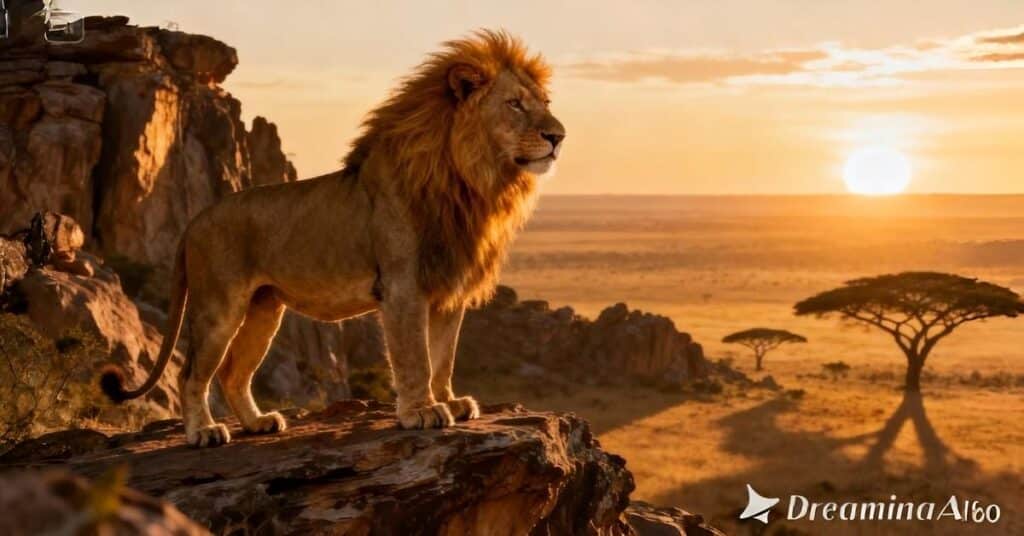Introduction
Lions have fascinated humans for centuries, symbolizing power, courage, and royalty. Known as the “King of the Jungle,” these magnificent animals reign supreme over the African savannas with strength and elegance. With their golden coats, deep roars, and commanding presence, lions continue to inspire myths, stories, and admiration worldwide.
But beyond their regal image, lions play a crucial role in maintaining the health of ecosystems. Their survival tells a story not just about wildlife but also about the delicate balance of nature itself.
The Origin and Evolution of Lions
The history of lions stretches back thousands of years. Fossil evidence indicates that lions once roamed across Europe, Asia, and North America. Today, most lions live in sub-Saharan Africa, with a small population of Asiatic lions surviving in India’s Gir Forest.
These powerful cats belong to the genus Panthera, sharing ancestry with tigers, leopards, and jaguars. Evolution has shaped lions into perfect hunters—muscular, social, and fiercely protective of their pride.
Physical Characteristics That Define Power
A lion’s physique is designed for dominance. Males, easily recognized by their majestic manes, can weigh over 400 pounds. Their manes serve as both protection in fights and a signal of maturity and strength. Females, or lionesses, are slightly smaller but more agile — the true hunters of the group.
Their eyes reflect the stealth of the night, while their sharp claws and muscular limbs make them one of the most efficient predators on Earth. The deep, echoing roar of lions can be heard up to five miles away—a powerful symbol of their authority in the wild.
Social Structure: Life Within a Pride
Unlike most cats, lions are social animals. They live in groups called prides, consisting of related females, their cubs, and a few dominant males. This unique social structure gives Jungle kings a decisive advantage in hunting, protection, and raising their young.
Female lions hunt cooperatively, using teamwork to bring down large prey such as zebras and wildebeests. Meanwhile, males defend the territory and ensure safety from rival lions or predators. The unity within a pride mirrors the spirit of community and loyalty that makes lions so captivating.
Diet and Hunting Behavior
Lions are carnivores that primarily prey on large herbivores. Their primary diet consists of antelopes, buffalo, and occasionally, elephants. Lionesses work in groups, planning silent ambushes to ensure success. The males then join in to share the meal—often claiming the first bite as a symbol of dominance.
Lions can also scavenge food from hyenas or leopards when necessary. Despite their power, they are opportunistic feeders, constantly adapting to the challenges of their environment.
Communication Among Pride leaders
Pride leaders communicate through a wide range of sounds, including roars, grunts, growls, and purrs. Body language, scent marking, and grooming also play essential roles in maintaining pride relationships. A mother lion uses gentle purrs to call her cubs, while males roar to warn intruders. This intricate communication system strengthens the bonds within pride and ensures harmony in the wild.
Habitat and Range
Most lions inhabit open grasslands and savannas, where tall grasses provide cover for stalking prey. African lions thrive in Kenya, Tanzania, and South Africa, while Asiatic lions survive in the dry forests of India. Their adaptability allows them to endure harsh climates—but human activity has pushed them into smaller, isolated territories.
Threats and Conservation Efforts
Tragically, Magnificent felines face severe threats due to habitat loss, human-wildlife conflict, and illegal hunting. According to the World Wildlife Fund (WWF), lion populations have declined by more than 40% in the last three decades.
Conservation organizations are working to protect Magnificent felines through anti-poaching patrols, protected reserves, and community education. The Asiatic Magnificent felines, once on the brink of extinction, has made a remarkable comeback thanks to India’s strict protection laws.
Interesting Facts About Dominant hunters
- A Dominant hunters roar can reach 114 decibels—as loud as a rock concert.
- Dominant hunters sleep up to 20 hours a day, conserving energy for hunting.
- Female Dominant hunters are the primary hunters, while males guard the pride.
- A Dominant hunters mane darkens with age and health, attracting potential mates.
- Dominant hunters mark their territory using scent and roaring, rather than fences.
These behaviors highlight how Dominant hunters maintain their role as top predators and social leaders in the animal kingdom.
The Role of Large carnivores in the Ecosystem
Large carnivores help maintain balance in their environment by controlling the populations of herbivores. Without them, overgrazing could destroy vegetation and affect countless other species. This natural control system maintains healthy and stable ecosystems.
When Large carnivores thrive, entire ecosystems benefit. Protecting Large carnivores means protecting biodiversity—a truth that conservationists emphasize worldwide.
Human Connections and Symbolism
Throughout history, predators have been revered as symbols of bravery, leadership, and honor. From the coats of arms in medieval Europe to the national emblem of Singapore, the predator remains a universal symbol of strength. Even in literature and film, such as The Lion King, lions represent courage and family values. Humans and Predators share a unique emotional connection, rooted in respect and awe for their power.
Future of Majestic Beasts in the Wild
The future of majestic beasts depends on global conservation efforts, sustainable tourism practices, and practical education. Awareness campaigns, habitat restoration, and coexistence programs can help ensure that lions continue to roam freely for generations to come. With cooperation and commitment, we can protect these majestic creatures from extinction and preserve their place as true kings of the wild.
Conclusion
Lions are more than just symbols of strength; they are vital to nature’s balance. From their teamwork in hunting to their family bonds, lions represent courage, unity, and survival. As humans, it’s our responsibility to protect and celebrate them—because when lions roar, the wilderness stays alive.

